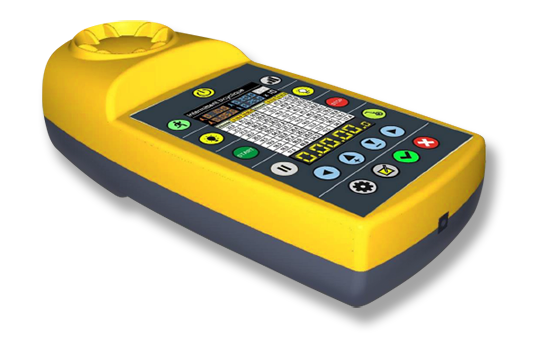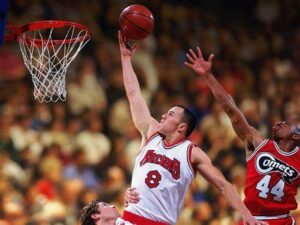The Basket-Ball
Like any sport (individual or collective), basketball, requires a good physical preparation in order to be as efficient as possible. Indeed, a good preparation allows to decrease the risk of injuries and increase the performance of each of your athletes. However, this sport has a very specific characterisitcs
1.The characteristics of Basket-ball
Understanding the specific demands of basketball is essential to developing an effective physical preparation that will allow players to meet the demands of the game. On average, a basketball player is active for about half of the game, which is about 20 minutes of actual play. However, during these 20 minutes, athletes are subjected to a series of intense and varied efforts that involve different physical abilities.
Interestingly, a basketball player averages a hundred jumps per game, which highlights the crucial importance of explosive power and muscle strength in the sport. These jumps are often used for shots, rebounds, steals, and defenses. Therefore, physical preparation that strengthens the leg muscles and improves jumping power is essential to enable players to perform these effectively and repeatedly throughout the match.
In addition, a basketball player also performs an average of about fifty sprints of less than 5 seconds per game. These sprints are typically used to move quickly across the field, to defend against the opponent, to create shooting openings, or to recover loose balls. Therefore, physical preparation that develops anaerobic endurance and sprint speed is essential to enable players to maintain a high level of performance throughout the game, even when they’re tired.
To meet these specific needs, training programs should be varied and include a combination of muscle-strengthening exercises, explosive power, cardio-respiratory endurance, and speed. Plyometric exercises, interval training sessions, agility drills, strength training sessions, and active recovery exercises can all be incorporated into players’ physical preparation to help them develop the necessary to perform at their best on the field.
2.The different areas of work to be perfected during the physical preparation for Basket-Ball
-
Endurance
It is essentiel, as in most of sports, to establish the aerobic bases which will allow your athletes to digest the load of the summer preparation but also that during the whole season. For that, it is recommended to do sessions that are not very intense but that last over the time by soliciting the aerobic system (footing, fartlek, split, intermittent…).
-
Explosiveness
As mentionned earlier, basketball is a change of pace sport. Explosiveness plays a key role in this sport. It is therefore necessary to work both Maximal Aerobic Power on the short-short or short intermittent but also to add changes of direction, jump … It is a question of alternating times of work with times of recovery. As this sport requires relatively short sprints ,we reccomend that intermittent work should not exceed 30 seconds. The Sportbeeper PRO would be suitable for this type of exercise.
-
Power
Finally, it is important to remember the crucial role of power in athletic performance. Power is defined as the product of strength and speed, which means that in order to achieve optimal performance in basketball, it is essential to work on both strength and speed. Plyometrics, which consists of exercises that harness the rapid contraction of muscles to improve power, is a fundamental component of physical preparation.
Plyometric work offers many benefits specific to basketball players. First of all, it helps improve vertical rebound, which is crucial for jumping actions such as shooting, blocking, and rebounding. Better vertical rebound allows players to dominate in aerial duels and have an advantage over their opponents.
Additionally, plyometrics helps develop the ability to change direction quickly, which is essential in a sport like basketball where players need to be agile and responsive to move effectively around the court and avoid defenders. This improved agility can also help reduce the risk of injury by allowing players to react more quickly to unforeseen situations.
In addition, plyometric work helps to increase strength endurance, allowing players to maintain muscle power throughout the match and delay fatigue. This can be especially important in crucial moments in the game when athletic performance can be the difference between winning and losing.
In addition to strengthening the lower body through plyometrics, it is also essential to focus on the muscle development of the upper body. This can be achieved using exercises with or without weights, such as push-ups, pull-ups, bench presses, and lateral raises, to strengthen the upper body muscles needed for shooting, passing, physical contact, and defense.



